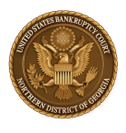(a) Chapter 7 Cases. In chapter 7 cases, all notices required by Bankruptcy Rule 2002(a), except clause 4 thereof, which are mailed after the expiration of the time for the filing of proofs of claim pursuant to Bankruptcy Rule 3002(c) may, unless the Bankruptcy Court orders otherwise, be mailed only to: (1) creditors whose claims have been filed; (2) creditors, if any, who are still permitted to file claims by reason of an extension granted under Bankruptcy Rule 3002(c)(6); and (3) any entities which have requested notice.
(b) Change of Address. Any party in interest that desires that its address for notices or payment be changed from the address shown on any proof of claim or paper previously filed by such party must file a request in the case. Changes of address must be filed in each adversary proceeding in addition to the main case. A party that fails to comply with this rule is not entitled to notice at the new address.
